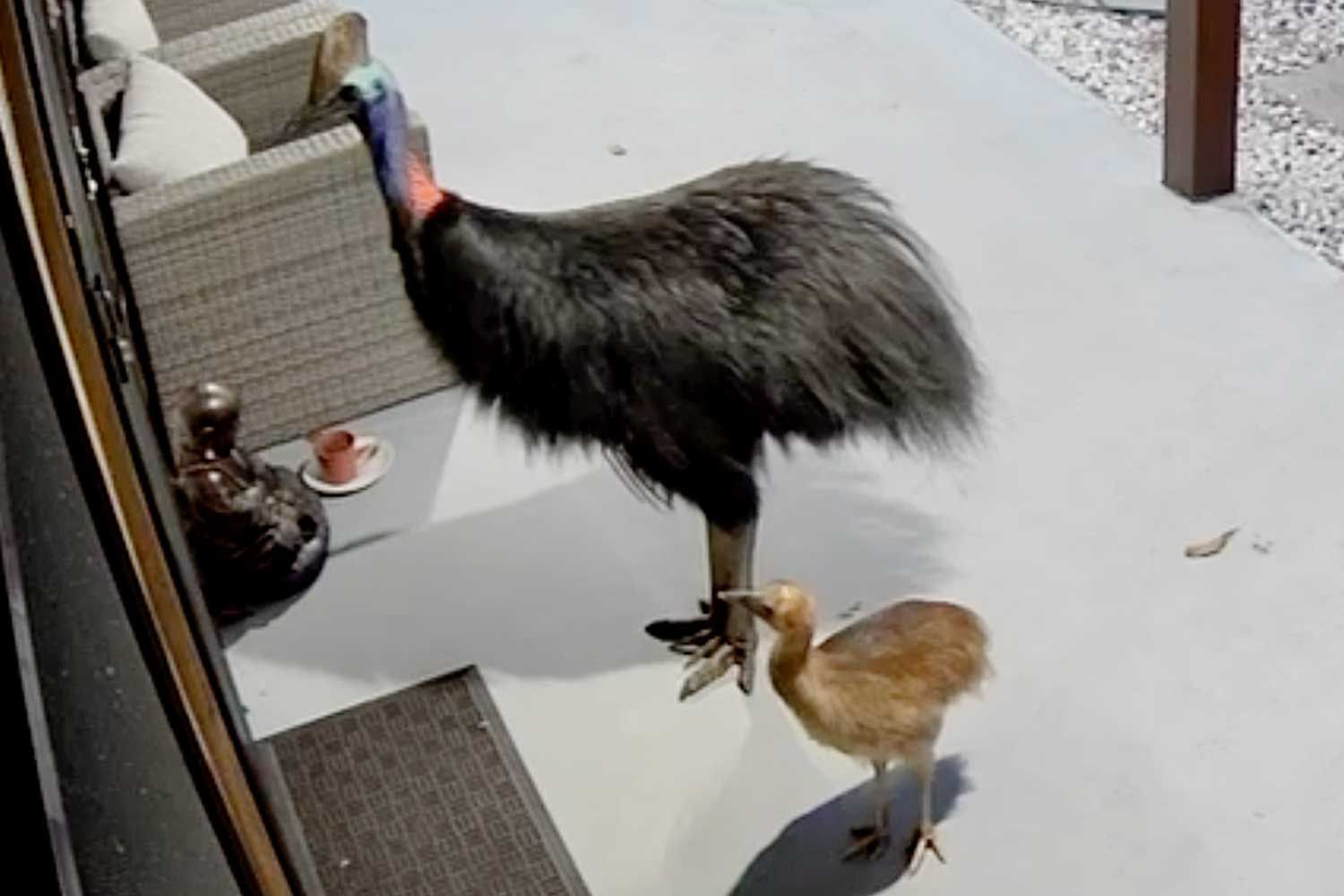Physical Address
304 North Cardinal St.
Dorchester Center, MA 02124
Physical Address
304 North Cardinal St.
Dorchester Center, MA 02124

:max_bytes(150000):strip_icc():format(jpeg)/cassowary-chick-4-approaching-home-queensland-062525-229566cac9974fba9bd21c5c93fa9d88.jpg)
A mother and her child had a close conversation with a dangerous bird, and their narrow escape was caught on security cameras.
Almost a month after “Close Meeting” in Australia, the Queensland Department of the Environment, Tourism, Science and Innovation released the images as a warning of the spring enemy behind it: The Cassowary. Often called the world’s most dangerous bird, “per World Wide Fund for Nature (WWF), Cassowary should not be fed or approaching, the authority warned in June 18 press release.
In the surveillance films, her mother and her child go up to a door in Mission Beach on May 9. The child picks up his beat to a run after discovering two cash registers behind him. The mother, who goes in front of her child, labels the birds and keeps the door open to the child as he runs inside. The two cash registers follow closely but do not. The birds slow down after realizing that the human duo had done it inside, but they are still approaching the now closed door, the pictures show.
Queensland Government Ministry of Environment, Tourism, Science and Innovation
The birds – a long and a much smaller – were “a habit male Cassowary and his bride,” the Queensland department said, leaving that they “approach a home in the hope of being fed.” This hope is generated by human involvement, which is why the authorities “urge people to avoid illegally feed wild animals”, especially cash registers.
Usually, in the wet tropics in Queensland, Cassowaries may be terrible to meet. According to the press release from the Queensland authorities, the airless birds “can cause serious injuries to humans and pets by kicking out with their large, split feet”, which led to WWF making comparisons to an iconic horror villain.
“They are most active on Twilight, have a chlorine competing with Freddy Krueger’sAnd is one of the few bird species that has killed people, “WWF said of the birds, which can reach 4 to 5.6 feet on average.
Queensland Government Ministry of Environment, Tourism, Science and Innovation
Feeding the birds often changes their behavior and makes them more daring around people, which has led to several Cassowary Run-ins, such as the filmed incident of the mother with her child.
“This incident is one of several Cassowary interactions in the area linked to illegal feeding,” wildlife Jeff Lewis said in a statement. “Thankfully the mother and the child could get into safety, but it is an important reminder not to disturb wildlife.”
Another Cassowary incident in April saw one of the birds approaching a Queensland -man in the seventies and kick him in the leg. The man “was treated for an incision on the leg” and “was lucky that the injuries were not worse,” Lewis added.
Incidents like these are “sharp examples,” he said about the dangers of feeding the birds.
Queensland Government Ministry of Environment, Tourism, Science and Innovation
Never miss a story – register for People’s free daily newsletters Keeping up to date on the best of what people have to offer, from celebrity news to compelling stories of human interest.
“Local livestock has warned people of the risks, installed signs and provided training, but the illegal feeding remains,” leaving Lewis in the publication. “When cash registers associate people with food, they can become impatient and aggressive, especially when accompanied by chickens.”
Queensland Department of the Environment, Tourism, Science and Innovation advises people to “never approach cash registers”, especially not chickens, because “male cash registers will defend them.” People living in Cassowary-populated areas should also slow down as they drive, but not stop looking at the birds (if they are on the way). Dogs living near Cassowary habitats should also be connected or kept behind a fence.